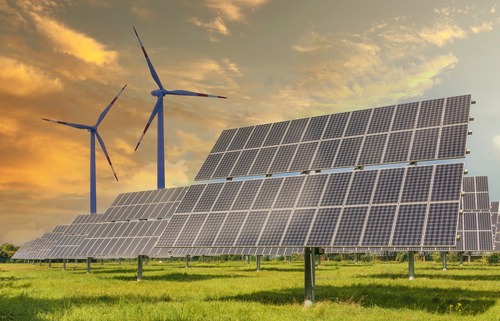Appalachian Power seeks to add nearly 500 MW of solar, wind power over next three years

In its most recent filing with the Virginia State Corporation Commission (SCC), Appalachian Power noted plans to acquire or contract for 294 MW of solar power and 204 MW of wind power over the next three years to allow it to meet the state’s renewable energy targets.
Filed last week, the plan doubles down on Appalachian Power’s stated intent to meet targets established by the Virginia Clean Economy Act (VCEA) primarily through investments in solar, wind, energy storage, and purchase of market renewable energy certificates (RECs). The VCEA, passed in 2020, calls for Appalachian Power to file an annual plan detailing its path to 100 percent carbon-free status by 2050.
“This is our company’s most extensive filing yet,” Chris Beam, Appalachian Power president and COO, said. “The update filed with state regulators reflects the in-depth analysis necessary to ensure sufficient resources are in place to provide affordable and reliable power for our customers while continuing to build our renewables portfolio and meet our VCEA requirements.”
By 2040, Appalachian Power expects to add approximately 3,300 MW of solar, 2600 MW of energy storage, and nearly 3,000 MW of onshore wind power to its current portfolio. On the path to this, in the short term, the company will add 204 MW of wind energy through operations in Illinois as of 2024, as well as a 150 MW solar facility in Virginia, 50 MW of solar in West Virginia, and more than 55 MW of other solar projects. Additionally, purchasing output from three Virginia solar facilities through power purchase agreements should bolster its energy supply by another 89 MW.
The development of energy storage to improve reliability for customers utilizing Appalachian Power’s Glad Station – White Top circuit in southwest Virginia – is also under consideration.
The company expects customer bills to increase due to these renewables additions. While the exact number has yet to be nailed down, if approved as requested, residential customers using 1,000 kilowatt hours per month could see a monthly increase of about $2.37 for their bills.
